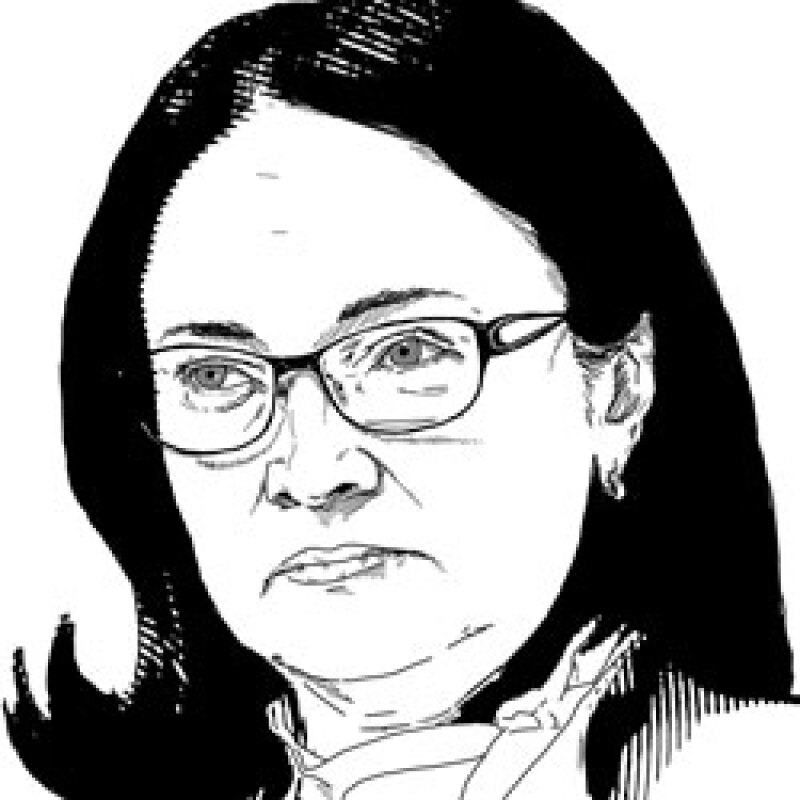
The Russian economy has bottomed out. A long period of protracted recession is over and the third quarter of this year demonstrates sequential economic growth. It is worth noting that it happened faster than we expected a year ago.
As we implement our policies on this matter we have a positive view of the ability of the Russian economy to get “back to normal”.
The shocks we faced were harsh. The Russian economy passed through a period of high volatility in financial markets, with uncertainty and pessimism over the economic situation in general. Today the situation has significantly improved and looking back, we can identify two important lessons that we have learned.
First, if you are forced to make a complicated decision involving potential political risks, and it is inevitable, you should make it earlier rather than later. The rapid transition of the exchange rate in Russia to a floating regime allowed the Russian economy to cope with shocks much faster and smoother than other countries that were faced with the same problems but delayed the decision to set their exchange rates free.
Second, the actions of any central bank are, alone, not enough to encourage economic growth on a sustainable basis. The Russian economy has to start large-scale reforms to overcome structural barriers.
So, what is happening in the Russian economy now? Inflation has decreased sharply from 15.7% a year ago to 6.4% now. We foresee inflation at about 5.5%-6% by the year-end. Therefore we are confident in our ability to reach our 4% inflation target by end-2017 and maintain inflation at that target level thereafter.
Inflation expectations have been declining. We hope that inflation expectations will be anchored at the target level once we have proved that inflation can be maintained at 4%.
The structure of the Russian economy changes to tradables from non-tradables further to changes in relative prices as expected. At this juncture, most changes and positive output growth are seen in the sectors competing with imports, such as food processing, chemicals, domestic tourism and traditional export industries such as mining and agriculture. Yet we also observe a growing number of cases where Russian producers, which had been producing for the local market before, are exploring export opportunities.
Yet, we are not satisfied with the level of achievements in our economy.
Despite recent positive developments, we still expect Russian GDP to contract by about –0.3% to –0.7% this year. Thereafter, we expect a modest recovery, with economic growth at 0.5% to 1.0% in 2017, and 1.5% to 2.0% in 2018-19.
A level of 1.5% to 2.0% is probably the upper limit of potential growth of the Russian economy now, and it could be inhibited by internal factors. Some of them are objective by nature (e.g. negative demographic trends), others are related to imperfect or unreasonably excessive regulations and weak institutions.
We are facing a complex set of negative factors that could be overcome by designing and implementing structural reforms.
I will mention only those that could foster rapid and sustainable economic growth in Russia. First, pro-competition policies, de-regulation and de-monopolisation in the economy. This will require significant reduction in direct and indirect state interventions in the economy, leaving much more room for private entrepreneurship.
Second, labour market reform aimed at increasing mobility of the labour force, would reduce wage pressures on the Russian economy and make it more efficient and flexible.
Third, a medium-term fiscal consolidation programme and a new fiscal rule that should be approved quickly. These would stabilise the real exchange rate and reduce fiscal uncertainty.
Though the structural reforms are crucial for the Russian economy, there is a particular role for the Central Bank in promoting economic growth.
First, we must achieve the inflation target and maintain the inflation rates close to 4%. Investments are almost impossible while inflation is high.
Second, the Bank of Russia’s monetary policy will remain moderately tight to lower inflation expectations and stimulate savings.
It means that interest rates (including the key rate) in the economy will exceed inflation by several percentage points.
To ensure high savings rates and set up conditions for their transformation into investments it is important to protect household deposits against inflationary depreciation. On the other hand, for businesses it is vital to have interest rates higher than inflation and to be able to utilise bank loans rather than rely solely on price rises.
Positive real interest rates are the new reality for the Russian economy. It allows all economic agents — banks, companies and national government — to improve their productivity, increase efficiency and reduce costs to achieve sustainable growth despite any unfavourable external economic conditions.
Elvira Nabiullina, head of the Central Bank of Russia
